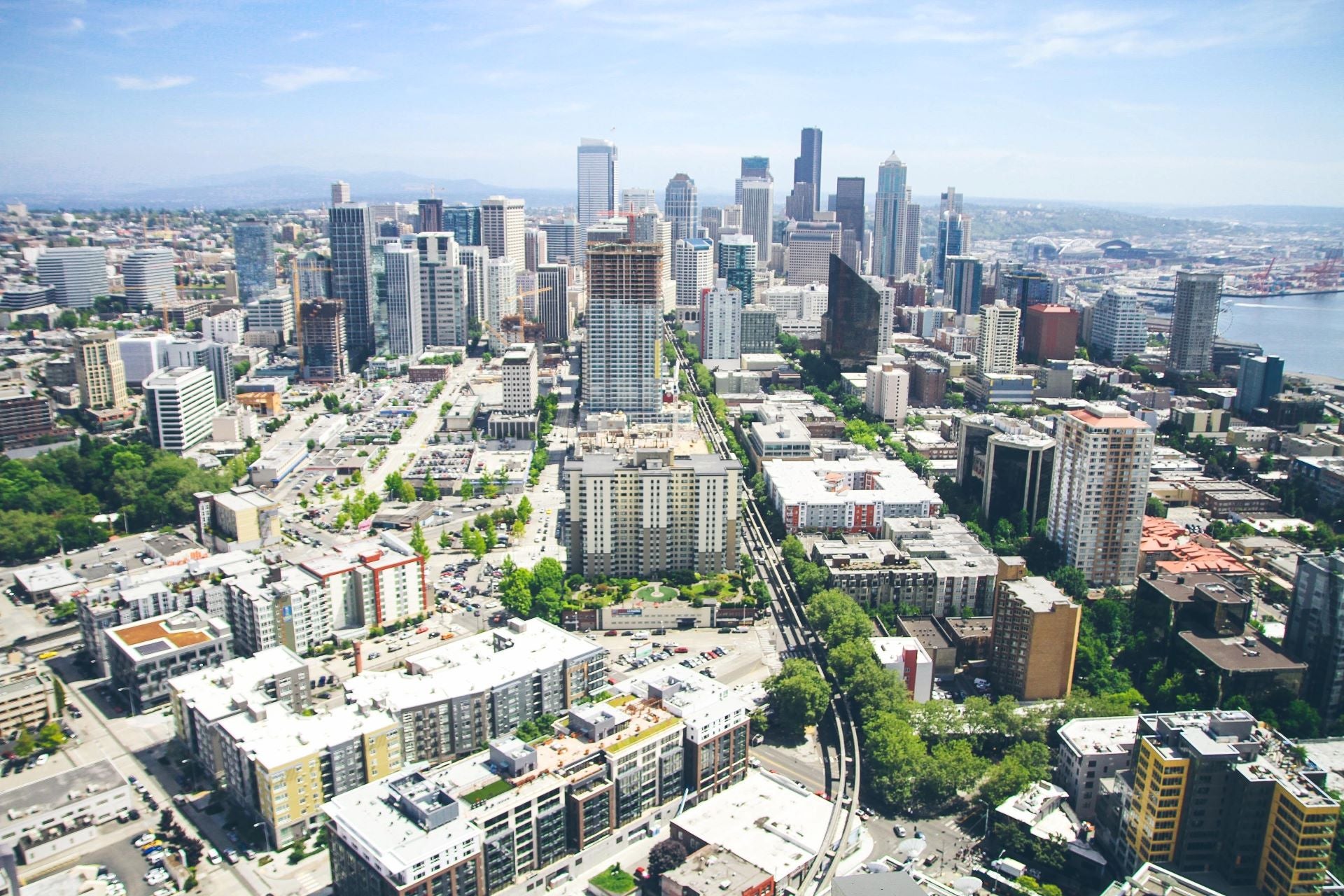
What were some of the key findings from the chapter on cities, settlements and key infrastructure?
In all cities and urban areas, the risk faced by people and assets from hazards associated with climate change has increased. Urban areas are now home to 4.2 billion people, the majority of the world’s population. Some key findings that we should take note of are:
- Urban growth provides a global opportunity to build climate resilience into future urban development. It allows us to think about where people live, the conditions in which new houses are developed and whether everyone has a voice in shaping neighbourhoods.
- There is a lot of emphasis on physical engineered infrastructure, sea walls and emergency sirens, but this approach can lock in new problems or simply shift risk further down the coast away from the wall and doesn’t usually help the poorest.
- Land use can make a big difference to climate resilience including ecosystem-based approaches and social infrastructure.
- Evidence shows that urban design interventions, like paying attention to the ratio of building heights to street width, can minimize urban heat and humidity, and also significantly decrease flood risks.
- In urban areas we have seen growing public awareness of climate issues, including movements led by youth and Indigenous communities. However, for urban climate-resilient development to work well, the evidence shows all voices have to be heard in the process.
- There is limited opportunity to act, the higher the temperature the fewer options for resilient development will be available so we can’t keep delaying action, we must act now.
To review more of the key findings, read Chapter 6: Cities, Settlements and Key Infrastructure (PDF).
How does climate change impact cities and coastal communities?
As global temperatures rise and extreme weather events increase in their frequency and in their intensity, a slew of climate change-related hazards pose risks to cities and to the life within these cities. Human lives and livelihoods in cities around the globe are experiencing more frequent and more severe heatwaves, flood events, and in coastal communities, flood surges and coastal erosion attributed to rising sea-levels. Because there is a concentration of people and activities in cities, the impacts of climate change are compounded and are complex. For example, human activities in cities, such as the use of cars, computer servers, heating and cooling in buildings, among many others, generate what we call “the urban heat island effect” (UHI), which means that cities emit heat. Imagine when this heat is compounded with extreme heat waves and humidity: it severely impacts human health leading to death among the most vulnerable like the elderly and people who have pre-existing health problems. Likewise, as we urbanize and build more and more, we cover the natural surface of the earth with concrete and asphalt, in other words, “impervious materials” that prevent rainwater from seeping into the earth to replenish underground aquifers. Not only does this lead to water insecurity, but also, during extreme rainfall events, it causes rainwater to run off these surfaces and accumulate in low-lying areas, causing floods and threatening people’s lives and properties. These are just examples of how climate change impacts cities necessitating our need to adapt.
How may urban design enable cities and coastal communities adapt to a changing climate?
Let’s start with defining adaptation, which, according to the Intergovernmental Panel on Climate Change is any adjustments that we make that enable us to minimize the harms of climate change or capitalize on any potential opportunities. To minimize hard, we use several urban design measures. The first is adjusting land and building uses to protect ecosystems that play a crucial role in mitigating climatic risks. For example, in coastal areas, we protect mangrove forests because they decrease the impact of storm surge and prevent beach erosion. Also, in low lying and flood prone areas, urban design regulations may restrict certain activities, like residential uses, from occurring in the lowest floors of buildings to protect human life in the case of a sudden storm surge or flooding. In some instances, urban design is used to regulate the building codes, such as, using stilts that allow the water to flow under the building without causing any danger to human lives nor any damage to the structure. In low-lying countries like the Netherlands, entire urban districts are “amphibious” where the buildings rise and fall with the rise and fall of the water table.
One of the most important urban design measures is nature-based solutions. Simply put, these solutions aim to braid nature within the city’s fabric. Known also as blue-green infrastructure, nature-based solutions alleviate many of the climate change related risks, from flooding to heat. More importantly, they offer co-benefits: in addition to adaptation, they also are excellent mitigation measures as they absorb carbon from the air while also providing aesthetic, liveable urban spaces that encourage people to walk and cycle.
More importantly, no matter the type of urban design intervention, as a society, we should endeavour for inclusivity of everyone in society. One example of the dangers of nature-based solutions is implementing them in affluent areas only. Therefore, urban design must be based on the community, in other words, it should be “community-based adaptation”.
When we talk about a Community-Based Adaptation (CBA) to Climate Change, what are we talking about? And how can it take place?
Simply put, CBA means empowering the local community to take action on climate change. This can take many forms. In my own work in Charlottetown, PEI, it meant understanding from the community members themselves their vulnerability to climate change and their needs and preferences for adaptation. To do so, I carried out a series of community charrettes, which are similar to focus groups except that they include interactive drawing activities. I carried out four such charrettes, one was dedicated to urban planners, architects, urban designers, and other experts working on climate change in Charlottetown. Three were dedicated to community members from all walks of life. The community members highlighted that they are worried about water shortages in the summer months, especially with large cruise ships that need a lot of water. They also highlighted that historic Charlottetown witnessed a significant increase in hard (impervious) surfaces in the last years as part of a campaign promise by a previous mayor. They relayed that as a result, the rainwater runs off to the sea, causing flooding in certain areas along the way. Connecting the dots, I researched these bits of information further, and learned that the increase in impervious surfaces that is causing rainwater runoff into the sea is also depriving the underground aquifer, Charlottetown’s only source of water, from being replenished. My research team’s recommendation was to bring back nature-based solutions to downtown Charlottetown in the form of blue and green infrastructure in existing parks and along streets.
Do you have hope that we can address the climate crisis? If so, what is your source of inspiration?
A lot inspires me. Without inspiration, there is no hope and no creativity. My interactions with my students are my primary source of inspiration. In my students I see resilience and resolve combined with creativity to overcome future challenges. I also find inspiration from the genuine interest and care of people from all walks of life who are concerned about climate change. In their question “what can I do?” I see genuine interest in being proactive when it comes to climate change. My research took me to many parts of the world, to different countries and cultures, and this question “what can I do?” is the common denominator. It is what unites us all, as ordinary human beings inhabiting this Planet and it gives me inspiration to continue through my research to finds ways to help us adapt to climate change.
Luna
Khirfan,
 Associate
Professor
at
the
School
of
Planning
and
IC3
member,
is
the
Coordinating
Lead
Author
of
Chapter
6
of
the
Intergovernmental
Panel
on
Climate
Change
Sixth
Assessment
Report
(AR6). Her
research
underscores
climate
justice,
particularly
local
communities’
engagement
in
adapting
the
built
environment
to
climate
change. She
develops
coupled
human-natural
systems
models
to
inform
planning,
policies,
and
behavior
while
engaging
stakeholders. She
transforms
the
conventional
“participatory
design”
role
of
the
charrette
into
a
method
of
data
collection
and
a
mechanism
of
knowledge
exchange
with
local
communities.
Her
most
recent
research
project
investigates
the
daylighting
(de-culverting)
of
urban
streams
and
re-integrating
them
in
the
urban
landscape
for
climate
change
adaptation
and
mitigation.
Associate
Professor
at
the
School
of
Planning
and
IC3
member,
is
the
Coordinating
Lead
Author
of
Chapter
6
of
the
Intergovernmental
Panel
on
Climate
Change
Sixth
Assessment
Report
(AR6). Her
research
underscores
climate
justice,
particularly
local
communities’
engagement
in
adapting
the
built
environment
to
climate
change. She
develops
coupled
human-natural
systems
models
to
inform
planning,
policies,
and
behavior
while
engaging
stakeholders. She
transforms
the
conventional
“participatory
design”
role
of
the
charrette
into
a
method
of
data
collection
and
a
mechanism
of
knowledge
exchange
with
local
communities.
Her
most
recent
research
project
investigates
the
daylighting
(de-culverting)
of
urban
streams
and
re-integrating
them
in
the
urban
landscape
for
climate
change
adaptation
and
mitigation.